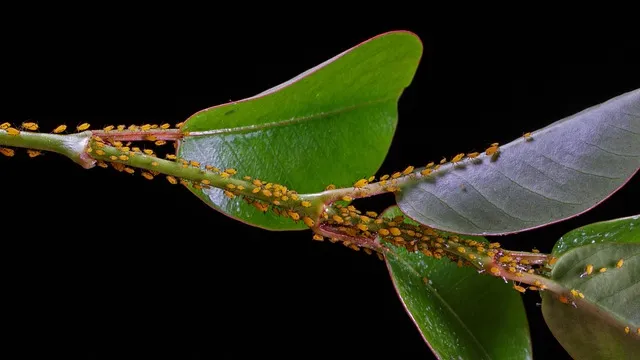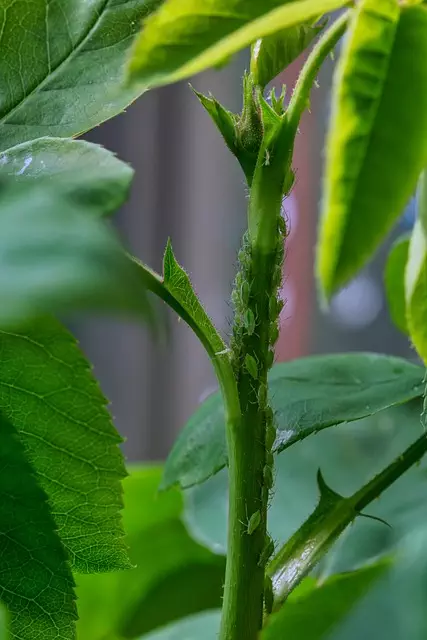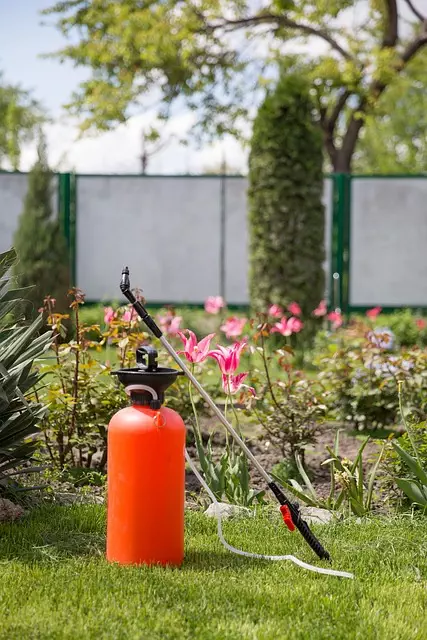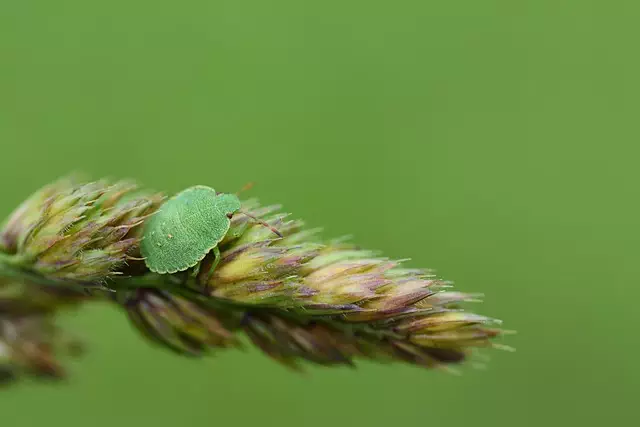Understanding common pests like ants, roaches, termites, and mosquitoes is key for effective bug extermination. Recognize their habits and signs of infestation to target strategies. Consult a qualified pest exterminator for professional services, prevention, and tailored treatments minimizing environmental harm. Regular inspections, maintenance, and clean living environments prevent infestations. Eco-friendly methods and responsible pesticide use ensure safety. Post-treatment care includes sealing entry points, cleaning, and routine inspections. Accurate identification and preparation are crucial for successful solutions.
Looking to reclaim your space from unwelcome visitors? Effective bug extermination is vital for maintaining a healthy, pest-free home. This comprehensive guide navigates the intricate world of pest control, empowering homeowners with knowledge and tools. From understanding common pests’ behaviors to exploring eco-friendly options and post-treatment care, we demystify the process. Learn from common mistakes and discover the role of professional exterminators, offering targeted treatments tailored to specific insects. Master prevention strategies for effective, long-lasting protection.
Understanding Common Pests and Their Behavior

Understanding common pests and their behavior is a crucial step in effective bug extermination. Pests like ants, roaches, termites, and mosquitoes are not just annoying; they can cause significant damage to property and pose health risks. For instance, ants and roaches are known to contaminate food sources, while termites can weaken structural integrity over time. Mosquitoes, on the other hand, are vectors for diseases such as Zika and West Nile virus.
Knowing their habits and preferences allows homeowners and pest exterminators to employ targeted strategies. Ants, for example, follow pheromone trails left by scouts to locate food sources, making it effective to disrupt these trails with certain scents or barriers. Roaches prefer dark, humid areas and avoid light, so sealing entry points and maintaining cleanliness can significantly deter them. Termites are drawn to wood and cellulose materials, leading to the use of termiticides in prevention and treatment. Mosquito control often involves eliminating standing water where they breed and using repellents or traps to reduce their population.
The Role of a Professional Pest Exterminator

A professional pest exterminator plays a crucial role in effective bug extermination, offering specialized knowledge and expertise to manage and eliminate pest infestations. Their services are invaluable for both residential and commercial properties, ensuring a safe and healthy environment. These experts utilize advanced techniques and tools tailored to specific pests, from identifying entry points and breeding grounds to deploying targeted treatments that minimize environmental impact.
A good pest exterminator also provides ongoing prevention strategies, offering advice on maintaining a pest-free space. They can help with regular inspections, treatment plans, and even recommendations for improving property conditions to deter pests in the long term. Their experience enables them to handle difficult or hard-to-reach areas that might be missed by untrained individuals, ensuring complete bug extermination.
Identifying Signs of Pest Infestation

Recognizing the signs of a pest infestation is the first step towards effective bug extermination. Pests like rodents, insects, or vermin often leave behind distinct clues that can alert homeowners or business owners to their presence. Keep an eye out for unusual noises coming from walls, floors, or ceilings, especially at night. Pests are more active during the dark, so any scratching, scurrying, or clicking sounds should raise suspicion. Additionally, pest exterminators recommend regularly inspecting your property for visible signs such as droppings (which can indicate rat or bird infestations), holes in walls or fabrics, or even live pests themselves.
Another crucial indicator is an unpleasant odor. Rodents and insects produce distinct smells that can permeate the air. Musty odors, for instance, often suggest a mold or insect problem, while a sweet, urinous scent might indicate a bee or wasp nest nearby. Regular inspections, especially in hard-to-reach areas, can help identify these signs early on, making it easier for pest exterminators to implement tailored solutions and prevent further damage or health risks associated with pest infestations.
Effective Prevention Strategies for Homeowners

Effective prevention is key for homeowners looking to avoid bug infestations. Regular inspections and maintenance are crucial; check for any signs of pests, seal entry points like cracks or gaps in doors and windows, and keep your home clean and clutter-free, especially in kitchens and dining areas. Using pest-repelling plants, essential oils, or natural barriers can also be helpful. Moreover, storing food properly, vacuuming regularly, and promptly cleaning up spills attract fewer pests.
Consider hiring a professional pest exterminator for a thorough assessment if you suspect an infestation or want proactive protection. They can identify specific pests, implement tailored treatments, and offer advice on long-term prevention strategies. Regular professional services are especially beneficial in areas prone to pest activity, ensuring your home remains bug-free year-round.
Targeted Treatment Methods for Different Pests

When it comes to bug extermination, a one-size-fits-all approach rarely works. Effective treatment requires understanding the unique behaviors and habitats of various pests. For instance, bed bugs thrive in dark, secluded areas, making them particularly difficult to eradicate without specialized equipment and knowledge. In contrast, ants follow distinct trails, allowing pest exterminators to trace their paths back to the source colony for more comprehensive elimination.
Similarly, termites are known for their silent destruction, often going unnoticed until significant damage has occurred. Professional pest exterminators employ termiticide applications specifically targeted at these hidden threats. By contrasting these methods, a tailored treatment plan can be devised that addresses each pest’s unique characteristics, ensuring a successful and lasting solution for both homeowners and businesses alike.
Eco-Friendly Options for Bug Extermination

In today’s world, many homeowners and businesses are seeking eco-friendly alternatives for bug extermination to reduce potential harm to the environment and non-target species. Traditional pest control methods often rely on synthetic chemicals that can have adverse effects on ecosystems and human health. Fortunately, there is a growing trend towards green pest management, offering safer and more sustainable solutions. One approach is to utilize natural predators such as birds, bats, and certain insects that feed on pests like mosquitoes, roaches, and ants.
Additionally, integrated pest management (IPM) strategies focus on long-term prevention and control by combining biological, cultural, mechanical, and chemical methods. Biopesticides, derived from natural organisms, plants, or beneficial bacteria, are another eco-friendly option. These substances mimic the earth’s own defense mechanisms, targeting specific pests without harming beneficial insects or the environment. Employing these strategies, a professional pest exterminator can provide effective bug extermination while minimizing the ecological footprint left behind.
Dealing with Pesticide Safety and Regulations

When dealing with bug extermination, particularly using pesticides, safety is paramount. As a responsible pest exterminator, adhering to local regulations and guidelines is crucial for both human health and environmental preservation. Always ensure that only licensed professionals handle and apply pesticides, as they are trained to use these products safely and effectively while minimizing exposure risks.
Pesticide safety involves understanding the properties of chemicals used, implementing proper protective gear, and following strict protocols during application. It’s important to know the specific regulations governing pesticide use in your region, including restrictions on application methods, areas, and timing. Following these guidelines ensures that the process is not only effective but also safe for your family, pets, and the local ecosystem.
Post-Treatment Care and Maintenance Tips

After a successful bug extermination process, proper post-treatment care and maintenance are essential to prevent reinfestation. Start by sealing any entry points or cracks where pests might enter your space. Regular cleaning and sanitizing of affected areas with eco-friendly products will help eliminate any remaining pest eggs or traces. It’s crucial to maintain good hygiene practices, especially in kitchens and food storage areas, to deter future infestations.
Consider scheduling routine inspections with a professional pest exterminator to monitor any signs of reoccurring pests. Regular maintenance includes keeping your home clutter-free, promptly addressing spills or leaks, and storing food in airtight containers. These simple steps will create an environment that is less inviting for bugs and ensure long-lasting protection.
Common Mistakes to Avoid During Pest Control

Many homeowners attempt to handle bug infestations on their own, but this can lead to several common mistakes that compromise the effectiveness of pest control. One of the biggest blunders is not identifying the specific type of pest infesting your property. Different insects require distinct approaches for extermination, so a one-size-fits-all method rarely succeeds. For instance, ants and termites necessitate different treatments due to their unique behaviors and habitats.
Another error is failing to prepare adequately before treatment. This includes keeping vulnerable family members and pets away from the affected areas and ensuring all food sources are secured. Using pest exterminators professionally and following their instructions is paramount. DIY methods may seem appealing, but they often don’t address the root of the problem and can lead to further issues, requiring more intensive treatments in the future.



